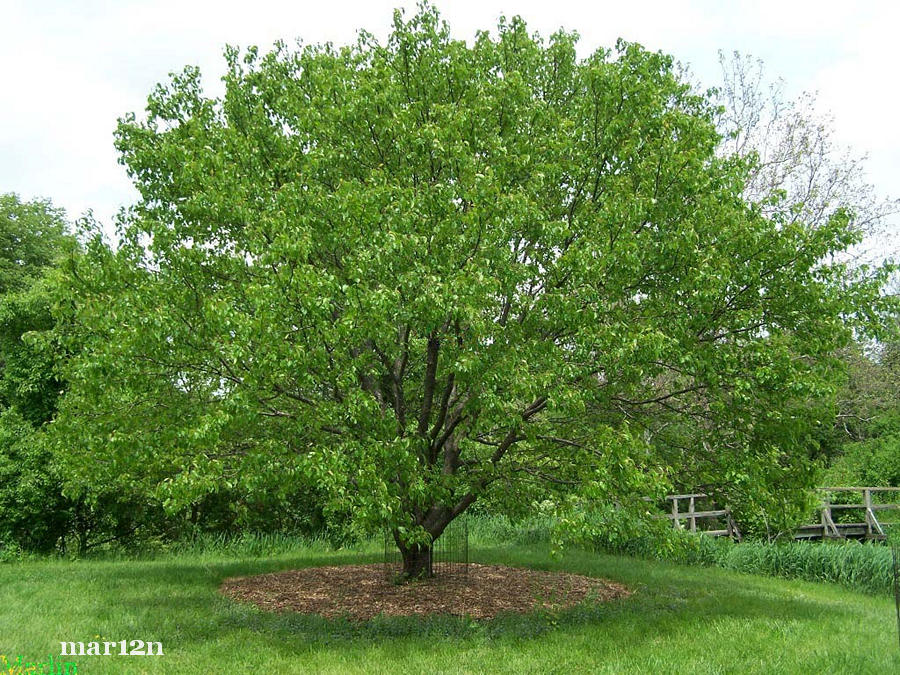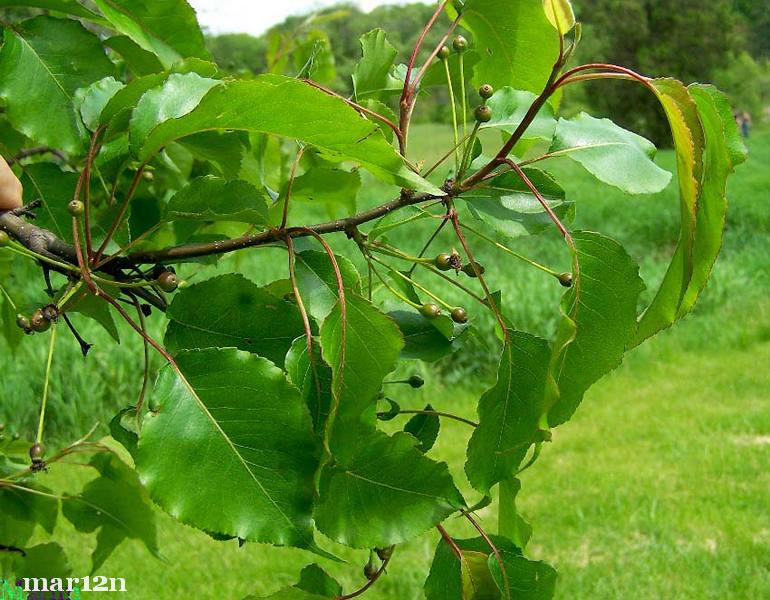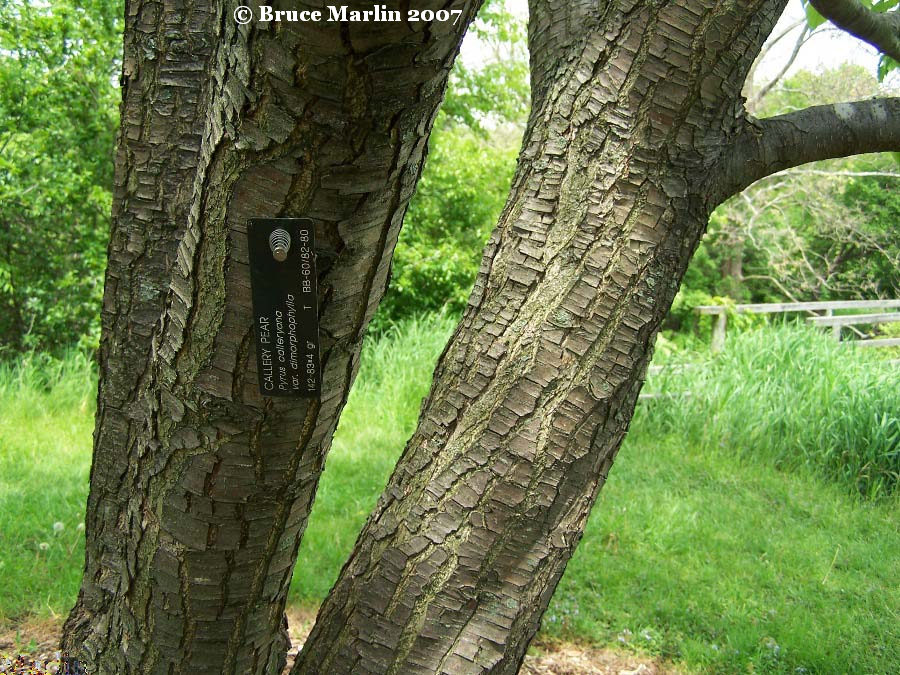Callery Pear – Pyrus calleryana
Morton Arboretum callery pear, from a graft, is 85 years old and one of Joy Morton’s original plantings in 1924

Callery Pear at Morton Arboretum, from graft, is 23 years old
Callery or Bradford pear is a medium-sized ornamental rapidly growing 30-50 feet tall and 20 feet wide. It takes on an upright, pyramidal form when young, becoming more oval and spreading with age. It grows best in full sun but will tolerate partial shade. Likes moist and well-drained soil but is easily adapted to various stressors, including acidic and alkaline Ph, restricted growth space, pollution, drought, and pruning.
Callery Pear is considered a harmful invasive in many areas. It forms dense, often thorny thickets that prevent colonization by native species.

Native to China, Japan, and much of western Asia, it was first brought to North America by the Arnold Arboretum in Massachusetts in 1908 [4]. Widely used in ornamental landscape plantings, it was rapidly propagated across the United States. The fruit industry also used Callery Pear as root stock for commercial pears, as pollen donors in orchards, and in programs breeding pears for fire blight resistance.

Family Rosaceae – Rose Family; Fruit Trees
Containing Hawthorns, Apples, Pears, Cherries, Plums, Peach, Almond, Mountain-Ash and Whitebeam. Rosaceae is a large family of plants with about 3,000 species in ~100 genera. Crabapple and other fruit trees provide some of our most outstanding flowering ornamentals.
Tree Encyclopedia | Tree Index

